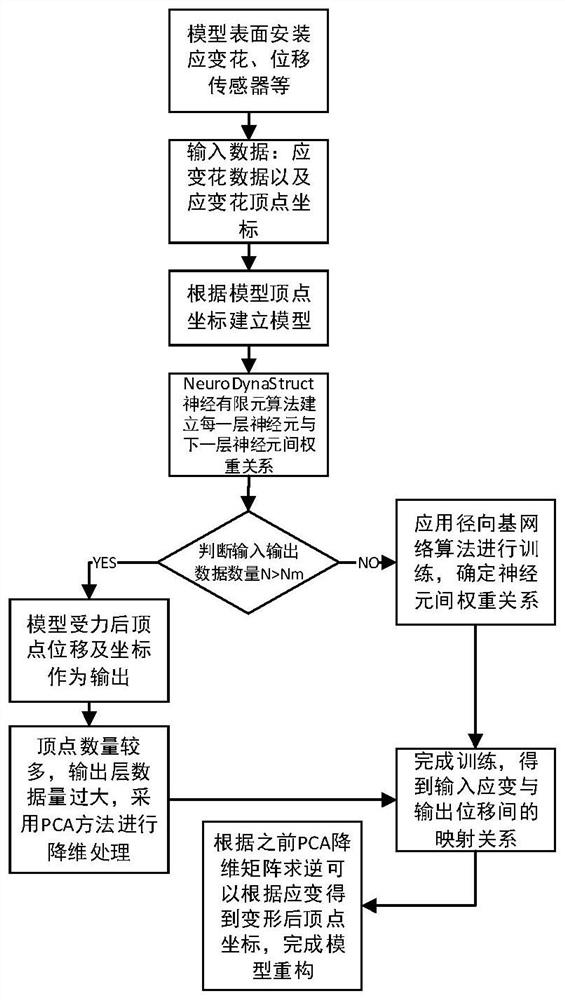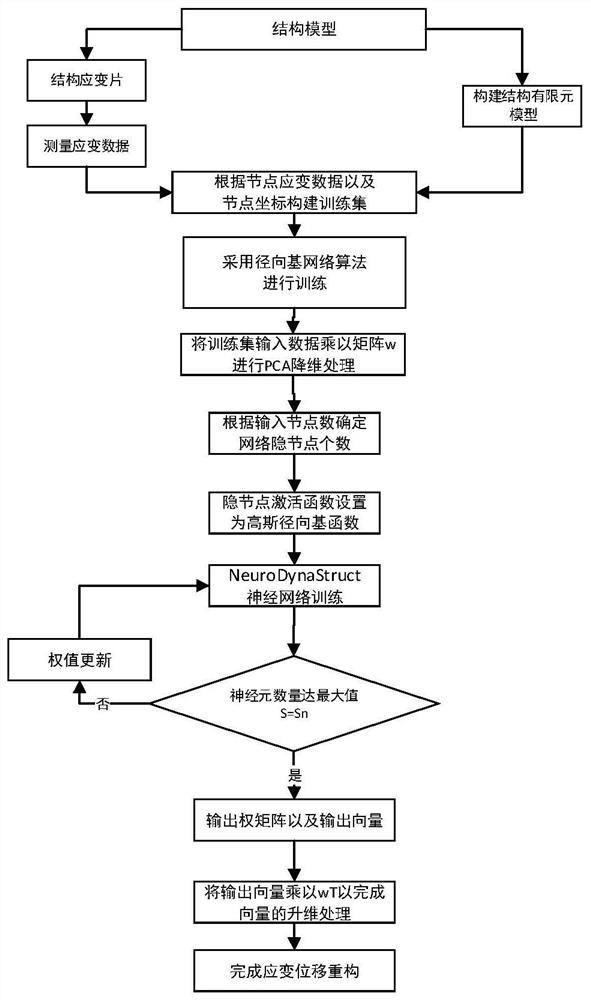Strain-displacement reconstruction method of finite element model structure
A model structure, finite element technology, applied in the field of finite element displacement reconstruction, can solve problems such as large training set data requirements, large training data volume, and reduced training accuracy
- Summary
- Abstract
- Description
- Claims
- Application Information
AI Technical Summary
Problems solved by technology
Method used
Image
Examples
Embodiment Construction
[0031] The object of the present invention is to propose a strain-displacement reconstruction method of a finite element model structure aiming at the strain-displacement construction problem of the structure.
[0032] In order to achieve the above object, the technical solution of the present invention comprises the following steps:
[0033] Step 1: Install strain and displacement sensors on relevant nodes of the structure to obtain the strain and displacement values of each node.
[0034] Step 2: Arrange the structural strain and displacement values to obtain the training set required for NeuroDynaStruct neural network training.
[0035] Step 3: Establish a model of the finite element structure according to the coordinates of the vertices of the model, and rename the model to include the node strain value as the input layer of the NeuroDynaStruct neural network.
[0036] Step 4: The deformed finite element structure model is used as the output layer of the neural networ...
PUM
 Login to View More
Login to View More Abstract
Description
Claims
Application Information
 Login to View More
Login to View More - R&D
- Intellectual Property
- Life Sciences
- Materials
- Tech Scout
- Unparalleled Data Quality
- Higher Quality Content
- 60% Fewer Hallucinations
Browse by: Latest US Patents, China's latest patents, Technical Efficacy Thesaurus, Application Domain, Technology Topic, Popular Technical Reports.
© 2025 PatSnap. All rights reserved.Legal|Privacy policy|Modern Slavery Act Transparency Statement|Sitemap|About US| Contact US: help@patsnap.com



